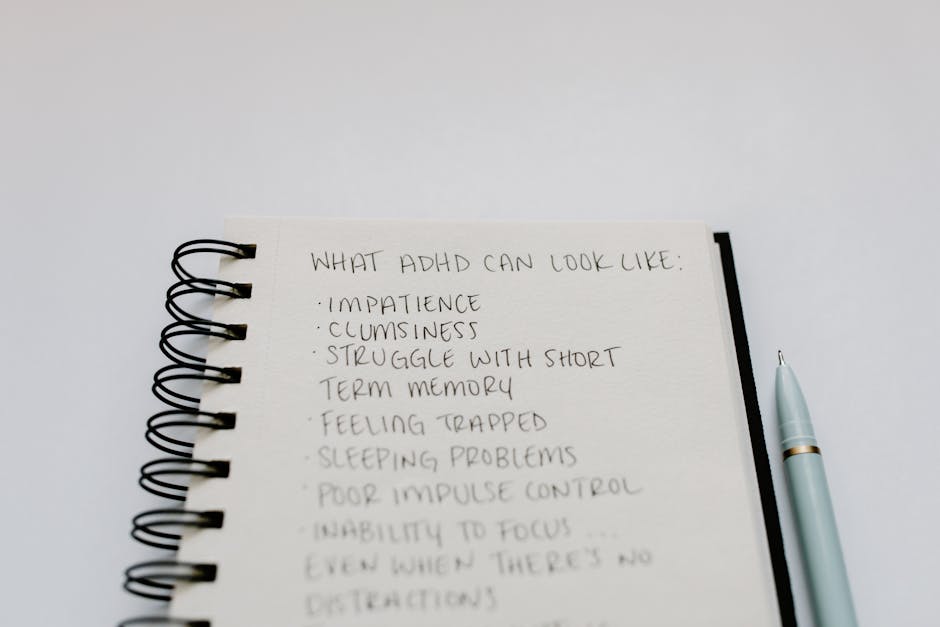Introduction
Definition of Psychological Disorders
Psychological disorders, also known as mental disorders, are health conditions characterized by changes in emotion, thinking, behavior, or a combination of these. These disorders can affect your day-to-day life, relationships, and physical health. They can be temporary or long-lasting, and affect an individual’s ability to relate to others and function each day. The causes of mental disorders are often unclear, but a combination of genetic, biological, environmental, and psychological factors is usually involved.
Psychological disorders are not the result of personal weakness, lack of character, or poor upbringing. They are real, complex, and devastating conditions that can have serious consequences if left untreated. It’s important to remember that mental disorders are not a choice, but rather conditions that require understanding, empathy, and appropriate treatment.
There are many different types of mental disorders, including depression, anxiety disorders, schizophrenia, eating disorders, and addictive behaviors. Each disorder has its own set of symptoms, but common signs include feelings of sadness, confusion, reduced ability to concentrate, excessive fears or worries, and extreme mood changes.
Importance of Understanding Psychological Disorders
Understanding psychological disorders is crucial for several reasons. Firstly, it helps to break down the stigma associated with mental health issues. Misconceptions and misinformation about mental disorders can lead to discrimination and isolation of individuals suffering from these conditions. By educating ourselves and others, we can promote empathy, acceptance, and support for those affected.
Secondly, understanding psychological disorders can help in early detection and intervention. Many mental disorders start early in life, and early treatment can often mean a better outcome. Recognizing the signs and symptoms can lead to early diagnosis and treatment, which can significantly improve the quality of life for individuals with mental disorders.
Lastly, understanding these disorders can guide effective psychological treatment. Knowledge about the nature and causes of mental disorders can help in developing effective treatment strategies, including psychotherapy, medication, and self-help measures. It can also help individuals and their families to cope with the challenges posed by these disorders.

Photo by Tara Winstead on Pexels
Common Types of Psychological Disorders
Anxiety Disorders
Anxiety disorders are among the most common types of mental disorders. They involve excessive and persistent fear, worry, anxiety, and related behavioral disturbances. Anxiety disorders can interfere with daily activities, are often chronic, and can lead to physical symptoms such as a rapid heartbeat and sweating. There are several types of anxiety disorders, including generalized anxiety disorder, panic disorder, and social anxiety disorder.
Generalized Anxiety Disorder
Generalized Anxiety Disorder (GAD) is characterized by chronic and excessive worry about a variety of events or activities. People with GAD often expect the worst and worry excessively about money, health, family, or work, even when there are no signs of trouble. They are unable to relax and often suffer from insomnia. Learn more about GAD here.
Panic Disorder
Panic Disorder is characterized by recurrent unexpected panic attacks, which are sudden periods of intense fear that may include palpitations, pounding heart, or accelerated heart rate; sweating; trembling or shaking; sensations of shortness of breath, smothering, or choking; and feeling of impending doom.
Social Anxiety Disorder
Social Anxiety Disorder, also known as social phobia, involves high levels of anxiety, fear, and avoidance of social situations due to feelings of embarrassment, self-consciousness, and concern about being judged or viewed negatively by others.
Mood Disorders
Mood disorders, also known as affective disorders, involve persistent feelings of sadness or periods of feeling overly happy, or fluctuations from extreme happiness to extreme sadness. The most common mood disorders are depression, bipolar disorder, and cyclothymic disorder.
Major Depressive Disorder
Major Depressive Disorder, often referred to simply as depression, is characterized by a persistent feeling of sadness or a lack of interest in outside stimuli. Those suffering from this disorder may experience a range of symptoms including changes in sleep patterns, appetite, energy level, concentration, daily behavior, or self-esteem. Depression can also be associated with thoughts of suicide. Find more information on depression here.
Bipolar Disorder
Bipolar Disorder, formerly known as manic-depressive illness or manic depression, is a mental disorder characterized by periods of depression and periods of mania. Manic episodes involve elevated or irritable mood, over-activity, pressure of speech, inflated self-esteem, and a decreased need for sleep.
Personality Disorders
Personality disorders are a type of mental disorder characterized by enduring maladaptive patterns of behavior, cognition, and inner experience, exhibited across many contexts and deviating from those accepted by the individual’s culture. These patterns develop early, are inflexible, and are associated with significant distress or disability. The most common types include borderline personality disorder and narcissistic personality disorder.
Borderline Personality Disorder
Borderline Personality Disorder (BPD) is a condition characterized by difficulties in regulating emotion. This difficulty leads to severe, unstable mood swings, impulsivity and instability, poor self-image, and stormy personal relationships. People with BPD may experience intense episodes of anger, depression, and anxiety that can last from a few hours to days.
Narcissistic Personality Disorder
Narcissistic Personality Disorder (NPD) is defined by a pervasive pattern of grandiosity, need for admiration, and a lack of empathy. Those affected often spend a lot of time thinking about achieving power or success, or about their appearance. They often take advantage of the people around them.
Eating Disorders
Eating disorders are serious conditions related to persistent eating behaviors that negatively impact health, emotions, and the ability to function in important areas of life. The most common eating disorders include anorexia nervosa, bulimia nervosa, and binge-eating disorder.
Anorexia Nervosa
Anorexia Nervosa is characterized by a distorted body image, with an unwarranted fear of being overweight. Symptoms include trying to maintain a below-normal weight through starvation or too much exercise. Anorexia can be life-threatening.
Bulimia Nervosa
Bulimia Nervosa is characterized by episodes of eating unusually large amounts in a short time (binge eating), followed by behaviors to prevent weight gain, such as vomiting (purging). Bulimia can be harmful to the body’s digestive system and can lead to electrolyte and chemical imbalances in the body that affect the heart and other major organ functions.
Schizophrenia
Schizophrenia is a chronic and severe mental disorder that affects how a person thinks, feels, and behaves. People with schizophrenia may seem like they have lost touch with reality, which can be distressing for them and for those around them. It’s one of the most debilitating and puzzling psychological disorders, and while it’s less common than other mental disorders, the symptoms can be very disabling.
Symptoms and Characteristics
Symptoms of schizophrenia include hallucinations, delusions, thought disorders, and movement disorders. People with schizophrenia may hear voices other people don’t hear or they may believe that others are reading their minds, controlling their thoughts, or plotting to harm them. These experiences can make them fearful and withdrawn and can cause difficulties when they try to have relationships with others.
Treatment Options
While there is currently no cure for schizophrenia, treatment can help relieve many of the symptoms. Treatment with medications and psychosocial therapy can help manage the condition. In some cases, hospitalization may be needed. With appropriate treatment, most people with schizophrenia can manage their symptoms, function independently, and enjoy fulfilling lives.

Photo by Tara Winstead on Pexels
Causes and Risk Factors of Psychological Disorders
Biological Factors
Biological factors are often involved in the development of mental disorders. These factors can include genetics, prenatal damage, infections, exposure to toxins, brain defects or injuries, and substance abuse.
Genetics
Many mental disorders run in families, suggesting they may be passed on from parents to children through genes. Genes contain instructions for the function of each cell in the body and are responsible for how we look, act, think, etc. Some mental disorders are linked to specific genes, but just because a person has a gene doesn’t mean they will develop the disorder. The disorder is more likely to occur when the gene is combined with certain environmental factors.
Brain Chemistry
Neurotransmitters, the naturally occurring brain chemicals that carry signals to other parts of your brain and body, are implicated in many mental disorders. When the neural networks involving these chemicals are impaired, the function of nerve receptors and nerve systems changes, leading to depression and other emotional disorders.
Environmental Factors
Environmental factors that can contribute to the development of mental disorders include a traumatic brain injury, prenatal exposure to alcohol or drugs, exposure to toxins, such as lead, at a young age, and exposure to chronic stress, trauma, or abuse.
Traumatic Events
Some mental disorders can be triggered by psychological trauma suffered as a child, such as severe emotional, physical, or sexual abuse; a significant early loss, such as the loss of a parent; and neglect.
Childhood Experiences
Children who have been emotionally abused or neglected are at a higher risk of developing mental disorders. This is especially true if the abuse is chronic or if the perpetrator is closely related to the child. Children who have been physically or sexually abused are also at high risk.
Psychological Factors
Psychological factors that may contribute to mental illness include the loss of a loved one, a difficult relationship, or physical, sexual, or emotional abuse. People who have low self-esteem, who are easily overwhelmed by stress, or who are generally pessimistic are also at higher risk of suffering from mental disorders.
Cognitive Distortions
Cognitive distortions, or distorted thinking, involves patterns of thought that are false or inaccurate, but which the individual persists in believing. These distortions often reinforce negative thoughts or emotions. Cognitive distortions tend to interfere with the way a person perceives an event. Because the way a person feels intervenes with how they perceive the situation, these cognitive distortions can result in an individual perceiving reality inaccurately.
Low Self-esteem
Low self-esteem is a common characteristic of many mental health disorders. It involves negative self-evaluation and general dissatisfaction with oneself. People with low self-esteem often see themselves as unworthy or inadequate, and these beliefs may contribute to mental disorders such as depression and anxiety.

Photo by Tara Winstead on Pexels
Diagnosis and Treatment of Psychological Disorders
Diagnostic Process
The diagnosis of mental disorders is based on identifying specific symptoms and signs that are outlined in the Diagnostic and Statistical Manual of Mental Disorders (DSM-5), published by the American Psychiatric Association. This manual is used by mental health professionals to diagnose mental conditions and by insurance companies to reimburse for treatment.
Psychological Assessments
Psychological assessments are a way of testing people’s behavior, personality, and capabilities. This assessment can include examinations of intellectual skills, cognitive strengths and weaknesses, vocational aptitude and preference, personality characteristics, and neuropsychological functioning. This information is then used to evaluate mental health and to plan treatment.
DSM-5 Criteria
The DSM-5 is the standard classification of mental disorders used by mental health professionals in the United States. It is intended to be applicable in a wide array of contexts and used by clinicians and researchers of many different orientations. The Diagnostic and Statistical Manual of Mental Disorders, Fifth Edition (DSM-5) provides a framework for the diagnosis of mental disorders, an essential step in effective treatment.
Therapeutic Approaches
There are many different approaches to therapy and treatment for mental disorders. Some people may have a treatment plan that includes only one type of psychotherapy. Others receive treatment in the form of both psychotherapy and medication. The kind of treatment a person receives depends on the severity of the symptoms, the presence of co-occurring disorders, and the individual’s preference.
Cognitive Behavioral Therapy
Cognitive Behavioral Therapy (CBT) is a common type of talk therapy (psychotherapy). You work with a mental health counselor in a structured way, attending a limited number of sessions. CBT helps you become aware of inaccurate or negative thinking, so you can view challenging situations more clearly and respond to them in a more effective way. Learn more about CBT here.
Medication
Medication does not outright cure mental illness. However, it may help with the management of symptoms. Medication paired with psychotherapy is the most effective way to promote recovery. The type of medication that will be most effective depends on the specific mental disorder a person is experiencing.
Self-help Strategies
While professional treatment is the cornerstone of managing mental health disorders, self-help strategies can also be effective. These strategies can be used alongside professional treatment to maximize the recovery process.
Stress Management Techniques
Stress management techniques such as meditation, relaxation exercises, and mindfulness can help to reduce symptoms of mental disorders and improve overall well-being. Regular physical activity and a healthy diet can also play a key role in managing mental health.
Support Groups
Support groups—whether in person or online—can be a valuable resource for people dealing with mental health disorders. These groups provide a safe environment where individuals can share experiences, coping strategies, and feelings with others in a similar situation. Find more about support groups here.

Photo by Tara Winstead on Pexels
Breaking the Stigma Surrounding Psychological Disorders
Education and Awareness
Education is a powerful tool in breaking down the stigma associated with mental disorders. By learning about mental health and understanding the complexities of mental disorders, we can help to dispel myths, challenge stereotypes, and change attitudes. This includes educating ourselves and others about the nature of mental disorders, their causes, and the reality that they can be treated effectively.
Public awareness campaigns and initiatives can also play a crucial role in educating the wider community about mental health. These campaigns can provide accurate information about mental disorders, promote positive messages and stories of recovery, and encourage people to seek help when they need it.
Education and awareness are not only about providing information but also about promoting empathy and understanding. By learning about the personal experiences of people with mental disorders, we can gain a better understanding of what it’s like to live with these conditions and how we can provide support.
Promoting Acceptance and Understanding
Promoting acceptance and understanding is another key aspect of breaking down the stigma associated with mental disorders. This involves recognizing that mental disorders are a part of human diversity and that people with these conditions deserve the same respect and rights as everyone else.
Acceptance and understanding also involve challenging negative attitudes and discrimination towards people with mental disorders. This can be done by speaking out against stigma, supporting people with mental disorders, and promoting positive portrayals of mental health in the media.
Finally, promoting acceptance and understanding involves providing support and compassion to people with mental disorders. This can involve listening to their experiences, offering help when needed, and being there for them in times of crisis.
Encouraging Open Conversations
Encouraging open conversations about mental health is a crucial part of breaking down stigma. By talking openly about mental health, we can help to normalize these conversations and make it easier for people to reach out for help when they need it.
Open conversations about mental health can happen in many different settings, from family dinners and school classrooms to workplace meetings and public forums. These conversations can help to dispel myths, increase understanding, and foster a more open and supportive environment for people with mental disorders.
Finally, encouraging open conversations about mental health also involves listening. By listening to the experiences and perspectives of people with mental disorders, we can learn more about these conditions and how to provide support. #MentalHealthMatters

Photo by Tara Winstead on Pexels
Conclusion
Recap of Main Points
In conclusion, psychological disorders are complex conditions that can have a significant impact on a person’s life. They can affect anyone, regardless of age, gender, socioeconomic status, or background. While these disorders can be challenging, it’s important to remember that they are treatable, and many people with mental disorders live fulfilling and productive lives.
Understanding the nature and causes of these disorders is crucial for effective treatment and support. This includes recognizing the signs and symptoms of mental disorders, understanding the role of biological, environmental, and psychological factors, and being aware of the different treatment options available.
Finally, breaking down the stigma associated with mental disorders is a crucial part of promoting mental health. This involves educating ourselves and others about mental health, promoting acceptance and understanding, and encouraging open conversations about mental health. #EndTheStigma
Importance of Seeking Help and Support
If you or someone you know is struggling with a mental disorder, it’s important to seek help. Mental disorders are real, serious, and treatable, and the sooner a person gets help, the better the outcome can be. Help can come in many forms, from professional treatment to support from friends and family, and it’s never too late to reach out.
Remember, seeking help is a sign of strength, not weakness. It’s an important step in taking control of your mental health and working towards recovery. Don’t let stigma or fear prevent you from seeking the help you need. #YouAreNotAlone
Finally, remember that everyone’s journey with mental health is unique. What works for one person may not work for another, and it’s important to find the treatment and support that works best for you. With the right help and support, people with mental disorders can lead fulfilling, productive lives. #BreakTheSilence



